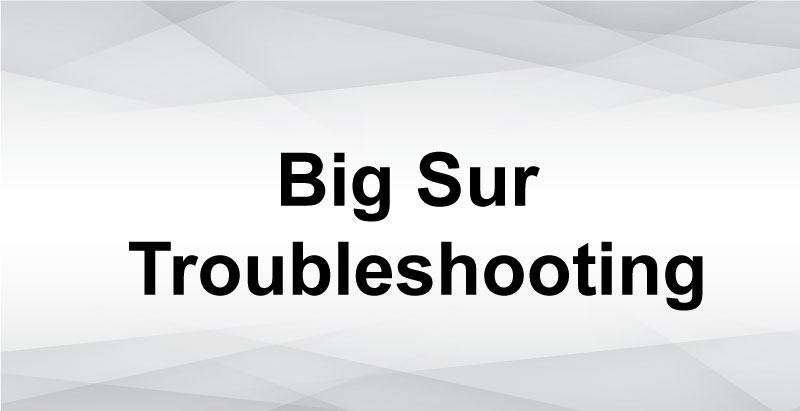This guide can teach you how to solve macOS Big Sur installation problems following the latest update.
Apple has been pushing macOS Big Sur to be the most innovative operating system upgrade over the past years, so much so that this is no longer considered a macOS 10.x release but a completely new version known as macOS 11.
Apple’s newest Macbook Aire (M1, 2020), MacBook Pro 13-inch (M1, 2020) and Mac mini (M1, 2020) all all come with macOS Big Sur already installed, along with Apple’s M1 chip, which has replaced the Intel-powered hardware that was used until now in their devices.
As Apple said, the new operating system has been designed from the ground-up to take full advantage of the new hardware, included in these newer models.
This, however, doesn’t mean that you cannot enjoy the latest macOS11 update if you are using an older Mac or MacBook version.
Installing macOS Big Sur should not be too troublesome, but, as it is with every big operating system changes, there could be bugs and problems on the way, mainly because of the new applications.
So, here we are to help overcome the most basic issues in macOS Big Sur. In this site you can find a variety of quick fixes and solutions, regardless of whether you have downloading challenges or whether you have hardware and software that doesn’t function as it should.
Cannot install MacOS Big Sur fix
MacOS Big Sur has been released for some time now but some users have reported that they cannot run Apple’s new OS update on their Mac computers. In reality, macOS Big Sur is known to have some compatibility problems with older MacBooks.
On certain Mac models, the installation wizard may display a notification saying that the update cannot be installed on this computer. On other models, the Mac may launch a blank screen or display a circle with a line.
If you are using a MacBook Pro (Retina, 13-inch, Late 2013) or MacBook Pro (Retina, 13-inch, Mid 2014) and cannot install macOS Big Sur on any of these devices, or the computer no longer wants to start up normally, the instructions below may help you fix the problem:
- Use the Power button on your Mac to Force Quit the computer. Keep the Power button pressed down for minimum 10 to 15 seconds, then release it. If your Mac is switched on but has become unresponsive, this action will turn it off.
- When the computer is shut down, remove any card placed into the SDXC card port, unplug all external equipment from your Mac (like any additional screens and USB accessories) and then switch the Mac on again.
- Check if the issue has been resolved and in case that the problem continues, reset the SMC for devices with non-removable battery.
- Another thing that you can do if macOS Big Sur still cannot be installed is to try to reset NVRAM or PRAM.
In case that the solutions described in this article cannot help and you are still having troubles to install the latest update on your MacBook, it is best to contact Apple Support and ask them for assistance.

Stay connected